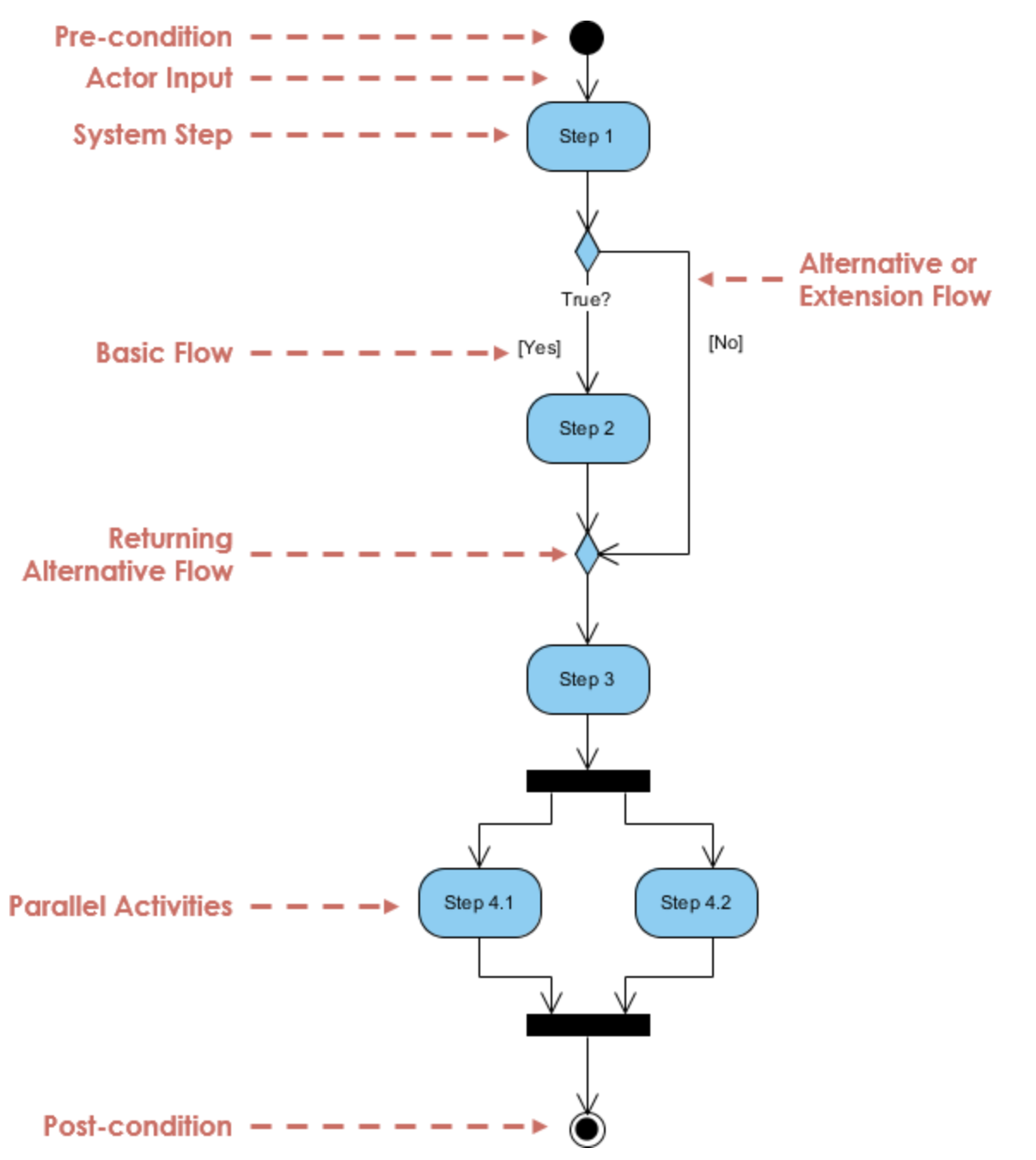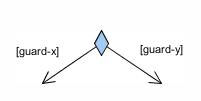Activity diagram is under the behaviour diagram categorisation, it describes how activities are coordinated to provide a service. Typically, an event needs to be achieved by some operations, particularly where the operation is intended to achieve a number of different things that require coordination, activity diagram can be used to represent such workflow.
An activity diagram can be used to model any type of process, from a high-level business workflow that involves different use cases, to the details of an individual use case, down to the specific details of an individual method.

Elements of an activity diagram
Activity
 Activity is used to represent a set of actions, it should have a name begins with a verb and ends with a noun (e.g. Get Patient Information, Make Payment Arrangements). Different from action, activity can be further divided into asset of activities/actions.
Activity is used to represent a set of actions, it should have a name begins with a verb and ends with a noun (e.g. Get Patient Information, Make Payment Arrangements). Different from action, activity can be further divided into asset of activities/actions.
Action
 Action is a single task to be performed, and can’t not be decomposed.
Action is a single task to be performed, and can’t not be decomposed.
Object node
 Represent an object or data that is flow from one activity to the another (in the below example, the information of the patient is flowed to another activity). It is by its class name.
Represent an object or data that is flow from one activity to the another (in the below example, the information of the patient is flowed to another activity). It is by its class name.
Control flow
 Show the sequence of execution
Show the sequence of execution
Object flow
 Show the flow of an object from one activity (action) to another activity (action).
Show the flow of an object from one activity (action) to another activity (action).
Initial node
 Portrays the beginning of a set of actions or activities.
Portrays the beginning of a set of actions or activities.
Final flow node
![]() Stop all control flows and object flows in an activity or action.
Stop all control flows and object flows in an activity or action.
Final node
 Stop all control flows and object flows in an activity or action.
Stop all control flows and object flows in an activity or action.
Decision node
 Represent a condition to ensure that the control flow or object flow only goes down one path. The outgoing edges should be denoted with conditions or guard expressions, the guard must be true to move the flow down to the next activity or action.
Represent a condition to ensure that the control flow or object flow only goes down one path. The outgoing edges should be denoted with conditions or guard expressions, the guard must be true to move the flow down to the next activity or action.
Merge node
 Bring back together different decision paths that were created using a decision-node.
Bring back together different decision paths that were created using a decision-node.
Fork node
 Split behaviour into a set of parallel or concurrent flows of activities or actions.
Split behaviour into a set of parallel or concurrent flows of activities or actions.
Join node
 Bring back together a set of parallel or concurrent flows of activity or action.
Bring back together a set of parallel or concurrent flows of activity or action.
Swimlane
 A way to group activities performed by the same actor. You should not have more than 5 swimlanes.
A way to group activities performed by the same actor. You should not have more than 5 swimlanes.
Example

Back to parent node: UML Diagrams
System_Design_and_Modelling UML Activity_Diagram Functional_Modelling